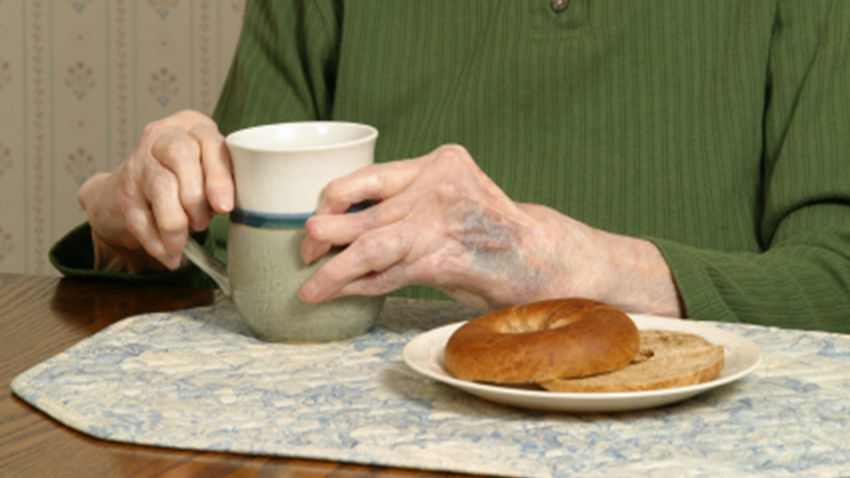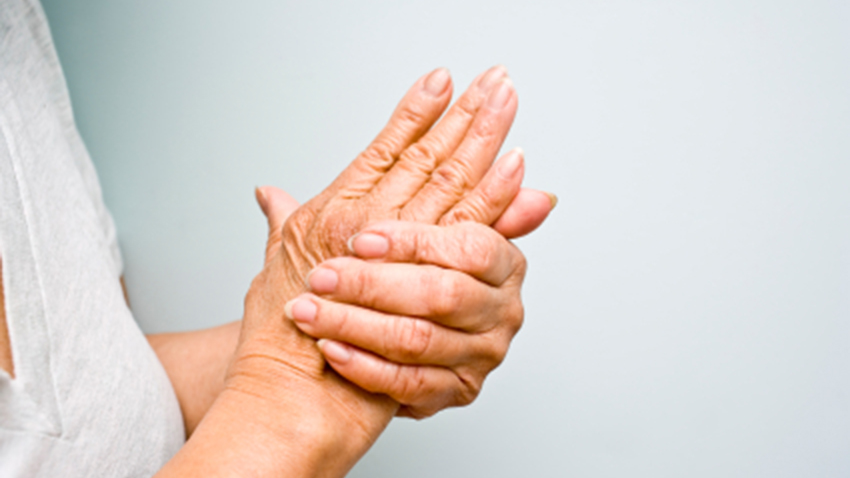Chronic Disease Education
Acute Condition Education
Working with your Family Physician
Working with Allied Care Providers
Thumb Arthritis

Knowledge is Power.
True/False - Quiz: Do You Understand Thumb Arthritis?
Information - Thumb Arthritis
 Arthritis at the base of the thumb is premature wear of the cartilage between the thumb metacarpal and the trapezium bones in the wrist. Patients usually experience pain at the base of the thumb in the area called the thenar eminence, or in the back area of the thumb.
Arthritis at the base of the thumb is premature wear of the cartilage between the thumb metacarpal and the trapezium bones in the wrist. Patients usually experience pain at the base of the thumb in the area called the thenar eminence, or in the back area of the thumb.
Causes & Symptoms of Thumb Arthritis
Thumb arthritis can be aggravated with pinching activities, such as opening a jar or squeezing a towel. The cause of arthritis at the base of the thumb is somewhat unknown. It usually starts off with instability, when the joints shear against each other in an abnormal way during their lifespan, causing the cartilage to wear prematurely. Most patients who get thumb arthritis are in their 50s and 60s, although it can happen at any age. The majority of patients who get it are women; women generally have more instability in their joints than men do.
Symptoms from arthritis at the base of the thumb usually come on slowly, although some patients experience pain and stiffness rather abruptly. They may be doing an activity that causes an impact on the thumb or fall onto the thumb, only to see their doctor and be given a diagnosis of arthritis.
Thumb Arthritis Treatment
Treatment of thumb arthritis includes anti-inflammatories, cortisone injections, physiotherapy and bracing. If you require surgery for thumb arthritis, your orthopedic surgeon may remove the trapezium bone. If the surgeon excises this bone, there’s no longer a bone for the metacarpal to rub against. Usually, a ligament reconstruction is added to that procedure. The classic operation is called an LRTI (ligament reconstruction and tendon interposition), because some doctors will use a piece of tendon to put into the space created by the excised trapezium.
 Generally, the operation is a day procedure that takes about an hour. Most patients usually need either splinting or casting of their thumb for approximately six weeks after surgery to allow ligaments to heal. Once the cast is removed, the thumb is usually very stiff for many months. Some patients benefit from physiotherapy to help to regain their motion. The overwhelming majority of patients obtain complete pain relief from their surgery. Some patients may notice a bit of stiffness or pinch weakness, but it’s rarely a functional problem.
Generally, the operation is a day procedure that takes about an hour. Most patients usually need either splinting or casting of their thumb for approximately six weeks after surgery to allow ligaments to heal. Once the cast is removed, the thumb is usually very stiff for many months. Some patients benefit from physiotherapy to help to regain their motion. The overwhelming majority of patients obtain complete pain relief from their surgery. Some patients may notice a bit of stiffness or pinch weakness, but it’s rarely a functional problem.
Talk to your healthcare provider if you'd like more information on thumb arthritis.
Visit HealthChoicesFirst.com for more videos and resources on orthopedics.
Print this Action Plan and check off items that you want to discuss with your healthcare provider
-
Thumb arthritis can be aggravated with pinching activities, such as opening a jar or squeezing a towel.
-
Most patients who get thumb arthritis are in their 50s and 60s, although it can happen at any age. The majority of patients who get it are women; women generally have more instability in their joints than men do.
-
Symptoms from arthritis at the base of the thumb usually come on slowly, although some patients experience pain and stiffness rather abruptly. They may be doing an activity that causes an impact on the thumb or fall onto the thumb, only to see their doctor and be given a diagnosis of arthritis.
-
Treatment of thumb arthritis includes anti-inflammatories, cortisone injections, physiotherapy and bracing.
-
If you require surgery for thumb arthritis, your orthopedic surgeon may remove the trapezium bone. If the surgeon excises this bone, there’s no longer a bone for the metacarpal to rub against. Usually, a ligament reconstruction is added to that procedure.
